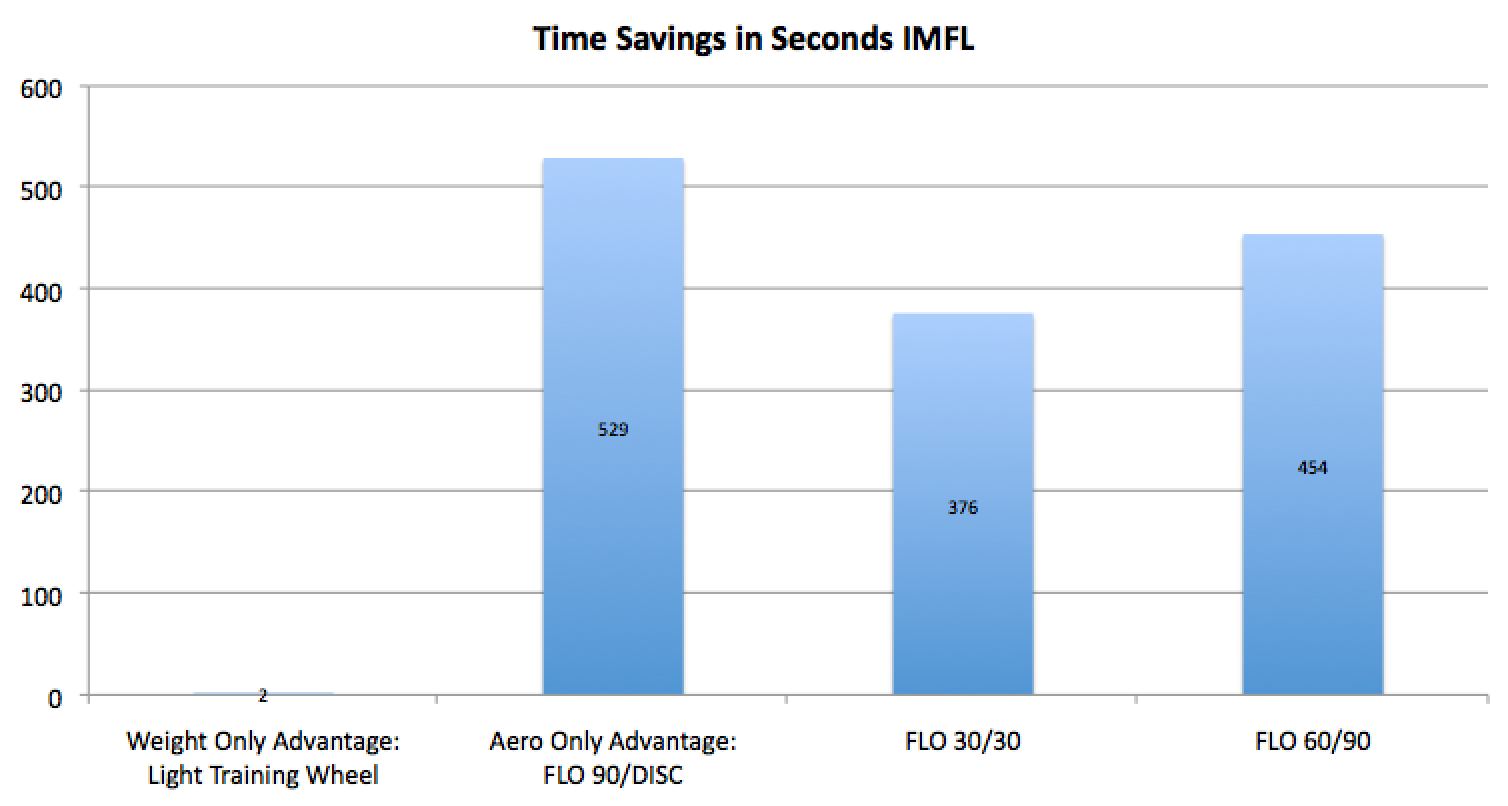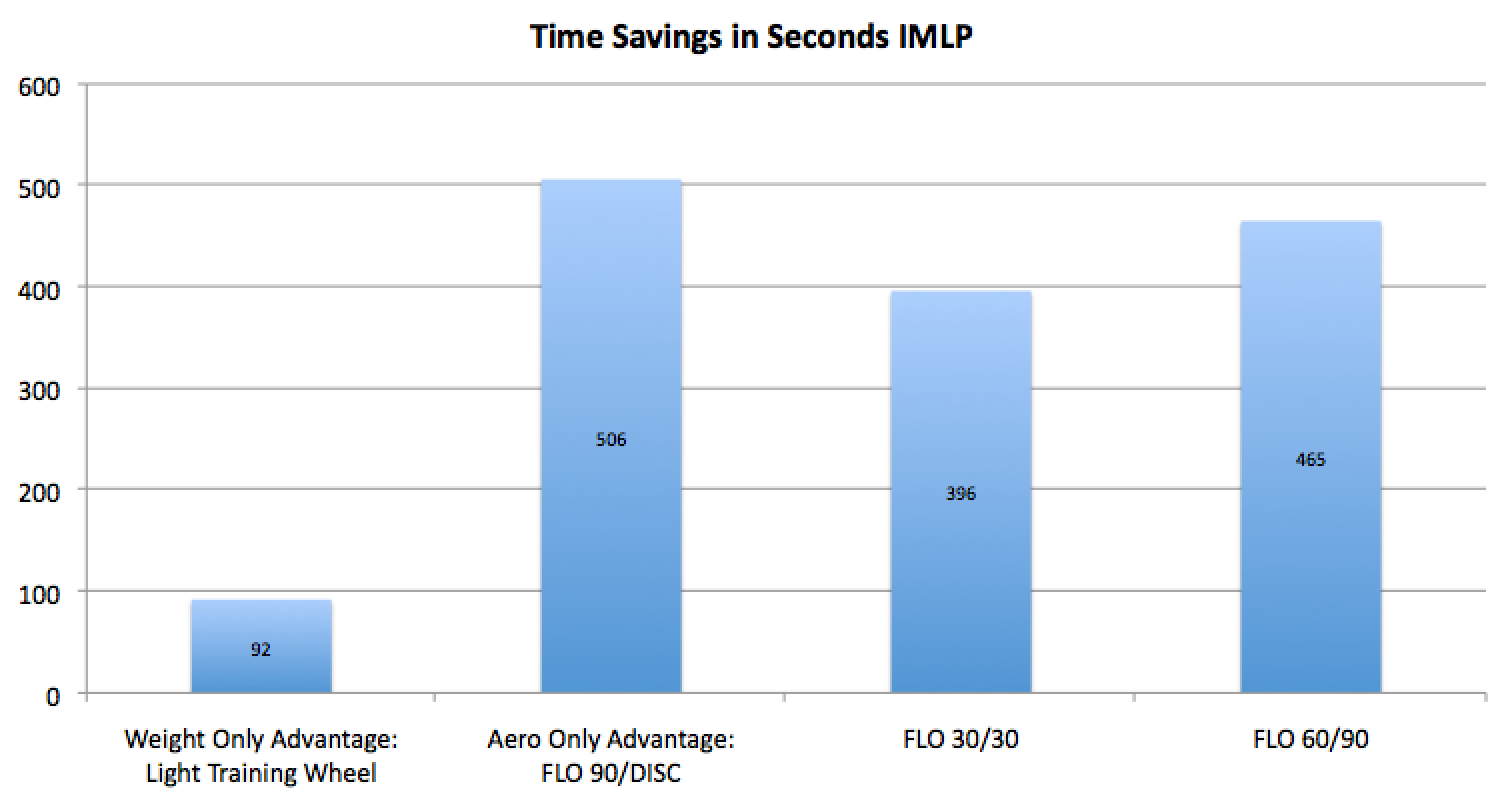Legacy Article: The data discussed in this article is taken from our previous generation of wheels.
“What will save you more time?” Improving the aerodynamics or decreasing the weight of your wheel set? Jon and I have probably been asked this question hundreds if not thousands of times since starting FLO. When designing FLO wheels, we focused primarily on aerodynamics. We did that because in almost every situation possible, aerodynamics have a far greater impact on time saved than weight. However, I don’t just want to claim that. In true FLO Cycling fashion, I want to do my best to prove that fact. To do that, I asked a very smart friend to help me out.
Help from a Friend
Ryan Cooper has a Ph.D. in math. He does the kind of math that makes even engineering math look easy. His area of study focuses on optimization mathematics and he has used that skill to develop a very cool web application called “Best Bike Split.” Best Bike Split has the ability to take in a ton of data like the rider’s FTP, weight, their bike set up, including wheels, tires, and position, and then predict a bike split for a particular course. This software is surprisingly accurate. I’ve seen Ryan predict IM and HIM bike splits within a minute several times. He’s right almost all of the time. If you’d like to learn more about Best Bike Split, be sure to check out our Interview with Ryan where he gives details about how the software works.
The Study
The goal was to determine whether aerodynamics or weight save you more time when selecting cycling wheels. To do that, Ryan and I created a list of potential race day wheel set ups. The wheel set ups ranged from lightweight and non-aero to not lightweight and very aero.
We then ran a virtual rider through some of the most popular Ironman courses and some “extreme” courses using each of the wheel set ups. When all of the test runs were completed, we compared the times.
Be sure to read the follow up article for more courses!
Part 3 is now live featuring our 2016 model wheels!
We then ran a virtual rider through some of the most popular Ironman courses and some “extreme” courses using each of the wheel set ups. When all of the test runs were completed, we compared the times.
Be sure to read the follow up article for more courses!
Part 3 is now live featuring our 2016 model wheels!
The Ironman Courses
The first three courses that we selected where some of the better known Ironman Courses. We selected a course that was flat, one that had rolling hills, and one that had a long, steady climb. Weight becomes more important on hilly courses so we wanted to include hilly courses to give weight the biggest advantage possible. Here are the Ironman Courses we selected.
The Flat Course – Ironman Florida
Distance: 112 miles
Total Gain: 991 feet
The Rolling Course – Ironman Coeur d’Alene
Distance: 112 miles
Total Gain: 4804 feet
The Long Climb Course – Ironman Lake Placid
Distance: 112 miles
Total Gain: 4612 feet
The Extreme Courses
Because we so firmly believe that aerodynamics are more important, we also selected two courses known for being some of the hilliest courses you will find. Here they are.
SavageMan 70
Distance: 55.7 miles
Total Gain: 6717 feet
Alpe d’Huez
Distance: 8.2 miles
Total Gain: 3514 feet
Average Grade: 8.1%
The Wheel Sets
The Aero Wheels
FLO 30/30: 1624 grams
FLO 60/90: 2074 grams
FLO 60/90: 2074 grams
FLO 90/DISC: 2259 grams
The “Un-Aero” Wheels
We created two hypothetical non-aero wheel sets that varied only in weight. The aerodynamic properties given to this wheel were that of a common training wheel like a Mavic Open Pro.
Light Training Wheel: 1100 grams
Heavy Training Wheel: 2259 grams
Heavy Training Wheel: 2259 grams
The Rider
We simulated a rider that we felt resembled a good majority of male age group athletes. This allowed us to keep things realistic and useful for our largest group of readers. Here is the athlete profile.
Rider Weight – 170lbs
Rider FTP – 250 watts
Bike 1 – Cervelo P2
Bike 2 – Cervelo S5 (used only on the Alpe d’Huez simulation)
We will assume that this rider will ride all of the courses at 75% of his FTP with the exception of the Alpe d’Huez. On the Alpe d’Huez the rider will exert a 100% FTP effort.
We will assume that this rider will ride all of the courses at 75% of his FTP with the exception of the Alpe d’Huez. On the Alpe d’Huez the rider will exert a 100% FTP effort.
The Results
The Ironman Courses
A baseline time has been set for each Ironman course below. The time for the “Heavy” Training wheel to complete the course was used as the baseline time. We then compared all other wheel sets to the baseline to see whether improving aerodynamics or decreasing weight had a bigger influence on the time saved.
Ironman Florida
 |
| Ironman Florida Bike Course Elevation |
Baseline Time
Training Wheel (Heavy Version 2259 grams) : Time on Course : 5 hr 21 min 44 sec
Time Saved by Improving Only Weight
Training Wheel (Light Version 1100 grams) : Time on Course : 5 hr 21 min 42 sec
Time Saved = 2 sec
Time Saved by Improving Only Aerodynamics
FLO 90/DISC (2259 grams): Time on Course : 5 hr 12 min 55 sec
Time Saved = 529 sec = 8 min 49 sec
Training Wheel (Light Version 1100 grams) : Time on Course : 5 hr 21 min 42 sec
Time Saved = 2 sec
Time Saved by Improving Only Aerodynamics
FLO 90/DISC (2259 grams): Time on Course : 5 hr 12 min 55 sec
Time Saved = 529 sec = 8 min 49 sec
Other FLO Wheels
FLO 30/30 (1624 grams) : Time on Course : 5 hr 15 min 28 sec
Time Saved = 376 sec = 6 min 16 sec
FLO 60/90 (2074 grams) : Time on Course : 5 hr 14 min 10 sec
Time Saved = 454 sec = 7 min 34 sec
Time Saved = 376 sec = 6 min 16 sec
FLO 60/90 (2074 grams) : Time on Course : 5 hr 14 min 10 sec
Time Saved = 454 sec = 7 min 34 sec
Ironman Coeur d’Alene
 |
| Ironman Coeur d’Alene Bike Course Elevation |
Baseline Time
Training Wheel (Heavy Version 2259 grams) : Time on Course : 6 hr 01 min 36 sec
Training Wheel (Heavy Version 2259 grams) : Time on Course : 6 hr 01 min 36 sec
Time Saved by Improving Only Weight
Training Wheel (Light Version 1100 grams) : Time on Course : 5 hr 59 min 54 sec
Time Saved = 102 sec = 1 min 42 sec
Time Saved by Improving Only Aerodynamics
FLO 90/DISC (2259 grams) : Time on Course : 5 hr 55 min 46 sec
Time Saved = 350 sec = 5 min 50 sec
Training Wheel (Light Version 1100 grams) : Time on Course : 5 hr 59 min 54 sec
Time Saved = 102 sec = 1 min 42 sec
Time Saved by Improving Only Aerodynamics
FLO 90/DISC (2259 grams) : Time on Course : 5 hr 55 min 46 sec
Time Saved = 350 sec = 5 min 50 sec
Other FLO Wheels
FLO 30/30 (1624 grams) : Time on Course : 5 hr 56 min 48 sec
Time Saved = 288 sec = 4 min 48 sec
FLO 60/90 (2074 grams) : Time on Course : 5 hr 56 min 11 sec
Time Saved = 325 sec = 5 min 25 sec
Time Saved = 288 sec = 4 min 48 sec
FLO 60/90 (2074 grams) : Time on Course : 5 hr 56 min 11 sec
Time Saved = 325 sec = 5 min 25 sec
Ironman Lake Placid
 |
| Ironman Lake Placid Bike Course Elevation |
Baseline Time
Training Wheel (Heavy Version 2259 grams) : Time on Course : 6 hr 00 min 11 sec
Time Saved by Improving Only Weight
Training Wheel (Light Version 1100 grams) : Time on Course : 5 hr 58 min 39 sec
Time Saved = 92 sec = 1 min 32 sec
Time Saved by Improving Only Aerodynamics
FLO 90/DISC (2259 grams) : Time on Course : 5 hr 51 min 45 sec
Time Saved = 506 sec = 8 min 26 sec
Other FLO Wheels
FLO 30/30 (1624 grams) : Time on Course : 5 hr 53 min 35 sec
Time Saved = 396 sec = 6 min 36 sec
FLO 60/90 (2074 grams) : Time on Course : 5 hr 52 min 26 sec
Time Saved = 465sec = 7 min 45 sec
The Extreme Courses
For the extreme courses we ran fewer trial runs. We ran the 1100 gram Light Training Wheel set and the FLO 90/DISC. Our goal was to see if weight could beat aerodynamics.
EDIT: I had a few readers asking for additional FLO 30 data. I have added the FLO 30 data to the Alpe d’Huez climb. They actually win!
EDIT: I had a few readers asking for additional FLO 30 data. I have added the FLO 30 data to the Alpe d’Huez climb. They actually win!
SavageMan
This is one of the hilliest Half Ironman courses in the world. If you were to turn this course into an full Ironman, you would net 13,434 feet of climbing. That is nearly three times hillier than Ironman Lake Placid! What wheels do you think won?
 |
| SavageMan 70 Bike Course Elevation |
The “Un-Aero” Wheels
Light Training Wheels (1100 grams) : 3 hr 20 min 43 sec
The Aero Wheels
FLO 90/DISC (2259 grams) : 3 hr 19 min 39 sec
That’s right. Aero wins again. Even with an additional 1159 grams (2.55 lbs) of wheels on one of the hilliest courses in the world, aerodynamics will save you 64 seconds.
Alpe d’Huez
So there has to be a breaking point, right? Weight has to win somewhere. It turns out it does, but you need one of the most extreme climbs in the world to make it happen. The Alpe d’Huez is one of the toughest climbs in pro cycling. To give you an idea of just how big the climb is, I superimposed the climb over top of the full Ironman Coeur d’Alene course. Remember, this climb takes place in only 8.2 miles and it absolutely dwarfs the IMCDA climbs. Can you imagine climbing this!
 |
| The Alpe d’Huez Superimposed on top of IMCDA |
The “Un-Aero” Wheels
Light Training Wheels (1100 grams) : 1:09:46
The Aero Wheels
FLO 90/DISC (2259 grams) : 1:10:09
EDITED: The FLO 30s were added after a reader asked to see it. They actually win by two seconds!
EDITED: The FLO 30s were added after a reader asked to see it. They actually win by two seconds!
FLO 30/30 (1624 grams) : 1:09:44
Even on arguably the toughest climb in the world, aerodynamics only lose 23 seconds to weight.
For the triathletes out there, I

Co-founder at FLO Cycling. Jon manages the day to day operations and acts as the lead engineer for all FLO products.



